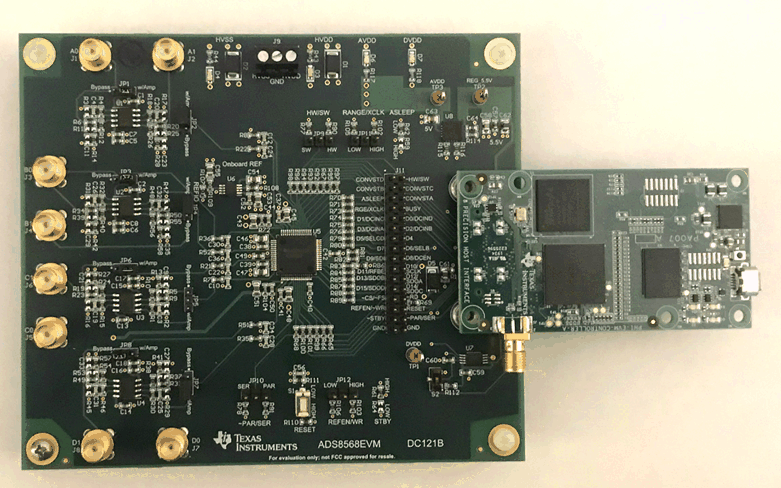SBAU193E June 2011 – May 2021 ADS8568
1 ADS8568EVM-PDK

This user's guide describes the operation and use of the ADS8568 evaluation module (EVM). The ADS8568 is an 8-channel, simultaneous sampling, 16-bit successive approximation (SAR) analog-to-digital converter (ADC). Each input channel on the device can support true bipolar input ranges up to ±12 V. The device includes a programmable internal buffered voltage reverence. The ADC includes a serial SPI interface and a parallel interface for data communication. Configuration of the device is achieved through simple static digital input pins (hardware mode) or through communications to the SPI interface. This user's guide covers circuit description, schematic diagram, and bill of materials for the ADS8568 circuit board.